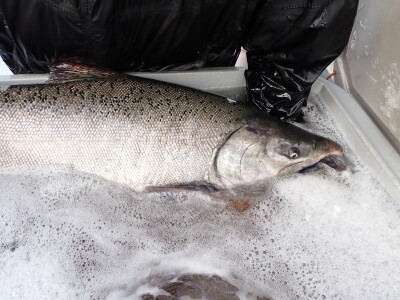Stalling out risk
Based on U.S. Coast Guard reports.
In a profession that is repeatedly deemed the deadliest in the country, fishermen are constantly weighing risk factors and asking themselves if working conditions are normal (safe), pose an unnecessary risk, or are unusual but necessary. Answering correctly often determines the safety of your crew and the boat.
When the unusual, unavoidable and inevitable maintenance problem occurs, the skipper must decide where to go from there. The open ocean creates conditions that often do not lend themselves to fixing a problem while underway. Performing the same maintenance in protected waters or at the dock likely poses a much lower risk. But even then, if your skills or experience at the task are lacking, the safest option is to wait until a professional can tend to the problem.
In mid-February, the skipper and three crew members of a 42-foot fiberglass longliner were setting and hauling back about 100 miles west of Tampa, Fla., in the Gulf of Mexico. The seas kicked up on the third set, and the gear parted. The skipper decided to leave the gear where it was and take his vessel into calmer water to wait for the weather and seas to subside. About 36 hours later the crew returned to the site to retrieve the gear, repair it, and resume fishing.
Because they arrived before daylight, the skipper chose to idle into the seas until daybreak before attempting to retrieve the gear. A few hours later, the autopilot was lost. The skipper went below, speculating the transmission was low in fluid, but he discovered a broken shaft. Numerous attempts to repair the shaft over the next several hours were unsuccessful.
The skipper tried to contact the owner, but could not reach him via cell phone or VHF radio. Finally, another fishing vessel in the area reached the owner for the stranded boat. The second boat relayed a message back to the skipper that the owner was sending out a sister vessel with materials to repair the shaft.
While waiting for help to arrive, the crew decided to find out if anything was fouled in the propeller that may have caused the shaft to break. A crew member retrieved the vessel's scuba mask so he could inspect the prop from the water. He tied a line to his arm as a safety measure. However, after he went into the water, he removed the line before the skipper observed what was going on. Another crew member threw out a second line, but the person in the water did not take it. By this time, the current was pushing him away from the vessel.
Another crewman secured a line to himself and entered the water to rescue the first person. However, the current quickly took the diver out of reach. The skipper tied off additional lines and went into the water, but he could not reach the diver. They all yelled for him to swim toward the vessel and the other crewmen in the water. The diver's fellow crewmen reported that he did not attempt to swim toward them. In a few minutes, the diver was out of site.
As soon as the skipper was able to get back aboard the vessel, he tried to contact the Coast Guard. His attempts were not successful, but another vessel reached the Coast Guard for him. The Coast Guard then sent out a search and rescue team. The missing crewman was never located.
Lessons learned
It can be tempting to keep busy and useful while waiting for help to arrive. But the risks fishermen weigh while setting and hauling must still be a factor whenever there's a lull in the fishing. This is especially true when attempting any activity out of the ordinary for a fishing boat.
We cannot answer why the diver removed or dropped his safety line, or why he did not attempt to swim back to the boat. The current may have been too strong and the water temperature could have affected his ability to react and swim. The water temperature was over 60 degrees, but with exposure, that is low enough to affect reasoning and response.
The chain of events in this incident began with the well-reasoned and safe decisions of the skipper to keep his crew and his boat safe. However, the decision to take on an unusual, unnecessary and risky diving operation led to another bad decision and the loss of a crew member.






